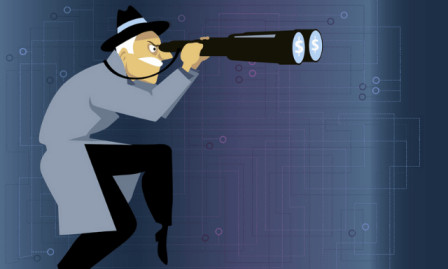Cyberforensics is an electronic discovery technique that determines and reveals technological criminal evidence by gathering and preserving information from a specific computing device. Electronic data storage extraction for legal purposes is a common part of cyberforensics. The term “forensics” literally means “the use of some form of established scientific process for the collecting, analysis, and presenting of evidence.”
However, in Cyberforensics, all types of evidence are crucial, especially when a cyber-attack has happened. Cyberforensics is a branch of law that combines parts of computer science and law to collect and analyse data from computers, networks, wireless communications, and storage devices in a way that can be used as evidence in a court of law.
Cybercrime encompasses a wide range of activities, from email scams to downloading copyrighted works for distribution, and is motivated by a desire to benefit from someone else’s intellectual property or personal information. Experts or law enforcement can easily view a digital audit trail using cyberforensics.
Developers frequently create software applications to combat and apprehend online offenders; these programmes are at the heart of cyberforensics. Although computer forensics is most commonly connected with the investigation of a wide range of computer crimes, it can also be employed in civil cases. Data recovery techniques and principles are used in Cyberforensics, but there are extra norms and practises in place to produce a legal audit trail.
Steps Involved in Conducting a Cyberforensics
Readiness
This initial section ensures that the Cyberforensics investigator/examiner and his or her team are always ready to embark on an investigation at the drop of a hat.
- This entails: ensuring that everyone has received training in the most up-to-date computer forensic investigative methodologies;
- When it comes time to visit the scene of the cyber-attack, being aware of any legal repercussions;
- Any unexpected technical/non-technical concerns at the victim’s place of business should be planned for as much as feasible in Cyberforensics.
- Ascertaining that all collection and testing equipment is operational and ready to use.
Evaluation
The cyberforensics team receives instructions on the cyber-attack they will examine at this point. It entails the following:
- The allocation/assignment of roles and resources which will be devoted throughout the course of the entire investigation;
- Any known facts, details, or particulars about the Cyber-attack which has just transpired;
- The identification of any known risks during the course of the investigation.
Acquisition
This entails the Cyberforensics team gathering evidence and current data from computer systems as well as other parts of the business or corporation that may have been impacted by the cyber-attack.
Obviously, there are a variety of tools and techniques that can be used to collect this information in Cyberforensics, but at a high level, this sub-phase typically entails identifying and securing infected devices, as well as conducting any necessary face-to-face interviews with the targeted entity’s IT staff. This Cyberforensics sub-phase is usually done on-site.
Collection
The actual physical evidence as well as any storage devices used to acquire latent data are labelled and packed in tamper-resistant bags in this portion of Cyberforensics.
The items are subsequently brought to the Cyberforensics lab, where they will be thoroughly analysed. As previously stated, the chain of custody becomes increasingly important at this point.
Analysis
This phase is just as critical as the previous one in the computer forensics inquiry. All of the collected evidence and latent data are researched in great detail in this section of Cyberforensics to determine how and where the Cyber-attack originated, who the perpetrators are, and how this type of incident can be prevented from entering the business or corporation’s defence perimeters in the future.
What does Cyberforensics Expert Do
A digital detective, a Cyberforensics Expert gathers and analyses evidence from computers, networks, and other data storage devices. It’s vital to remember that cyber forensics professionals often deal with the aftermath of an incident; they aren’t usually involved in preventing a cyber attack or stopping an illegal act from happening in the first place.
Role of Cyberforensics in crime
Because of the ability required to recover information and use it as evidence, the role of cyberforensics in criminal investigations is growing all the time. Despite the fact that this looks to be a challenging assignment for cyber forensic investigators, it is their area of competence. As a result, the demand for skilled Cyberforensics workers is increasing.
Cyber forensic investigation was named the number one profession by Forbes Magazine in 2015. Cyberforensics is not only a critical position, but also one that assists law enforcement in solving cases and improving the team’s overall efficiency.








